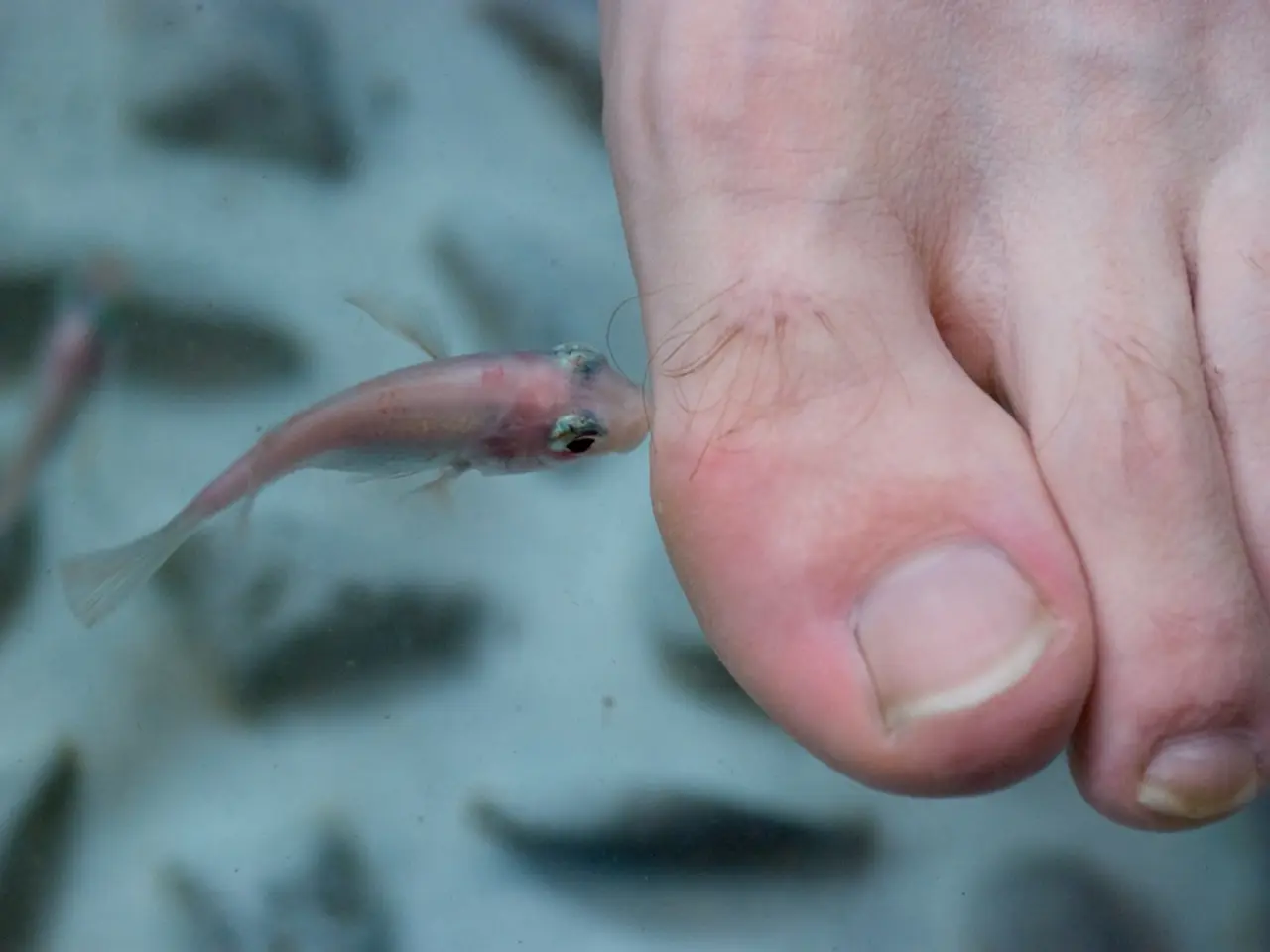Fish-Human Genetic Link Discovered: Finger, Toe Origins Revealed
Scientists have uncovered a fascinating genetic link between fish and humans. A team led by Aurélie Hintermann from the University of Geneva discovered a gene region, 5DOM, that controls the development of fingers, toes, and the cloaca in fish, and is also present in humans.
The 5DOM gene region, found in both species, plays a crucial role in the development of these terminal body parts. In humans, the origin of fingers and toes is still a mystery, but the prevailing theory suggests they evolved from the tips of fish fins. The Hox genes, activated by the 5'Hoxd region, determine the position and identity of body parts, including digits. In mice and fish, specific Hox genes like HoxA and HoxD clusters are involved in fin and limb development, showing a genetic link between the two.
Intriguingly, the cloaca and fingers/toes share a common feature - they are terminal parts. This led to the recycling of the 5DOM gene region for new functions. In mice, 5DOM is involved in the development of fingers, toes, and urinary/reproductive organs, while in fish, it controls cloaca formation.
The discovery of the 5DOM gene region provides valuable insights into the evolution of bodies in fish, land animals, and humans. As the first vertebrates ventured onto land 380 million years ago, leading to the development of amphibians, reptiles, birds, and mammals, understanding how these genes have evolved will shed light on our own origins. Follow-up studies are underway to investigate this further.
Read also:
- Rising state pension ages disproportionately impact a particular demographic, raising questions about the necessity of extending working years.
- Increase in mortality among seniors due to falls
- Inquiries Frequently Encountered
- Greece pursuing building techniques without the use of traditional heating methods







